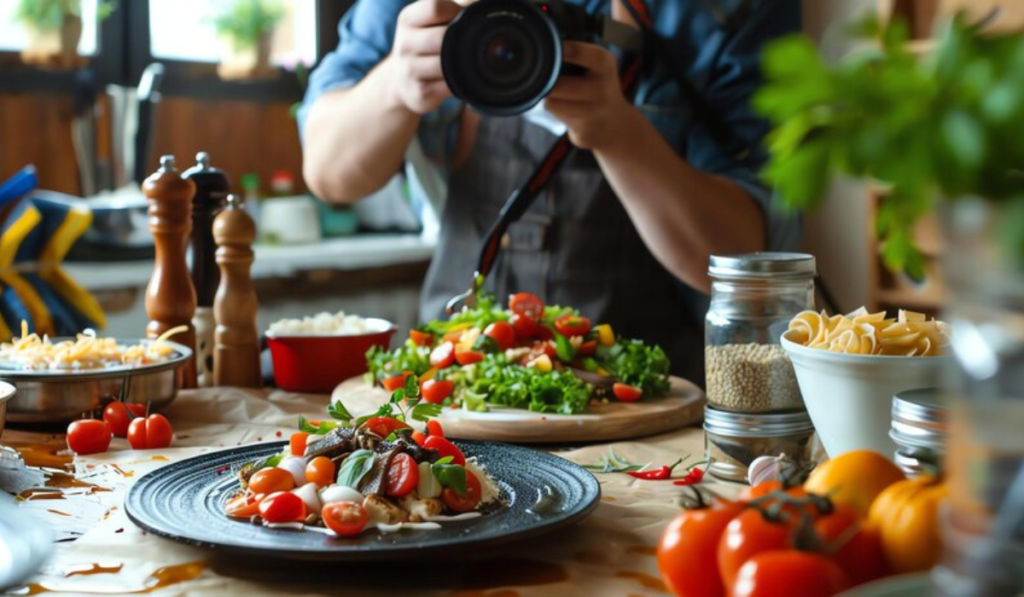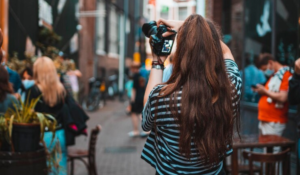Food Photography: A Complete Guide

In recent years, food photography has grown in popularity thanks to social media platforms such as Instagram and the demand for visually appealing content. Mastering food photography is a great way to expand your creative potential, whether you are a professional food photographer, food blogger or just someone who loves to capture delicious meals. This comprehensive guide will cover everything you need in order to take beautiful food photos, from the basics of composition to the essential gear and styling tips.
1. Accessibility and Applicability
Food photography can be used in a variety of industries and businesses. Food-focused publications, restaurants, consumer packaged food, delivery services and magazines all depend on high-quality images to attract customers and showcase their products. The principles of food photography are the same whether you’re shooting a gourmet dish at a fine-dining establishment or a home-cooked meal.
2. Composition Basics
The composition of a food photograph is crucial, because it affects the way the viewer sees the dish. Experimenting different angles and perspectives will yield visually pleasing results. There are many ways to compose food photos. From 45-degree angles to overhead shots and straight-on images, the possibilities are endless.
3. Lighting Techniques
The lighting is probably the most important part of food photography. The best way to capture the colors and textures of food is with soft, diffused lighting. This can be achieved by using natural sources, such as a large window. Artificial lighting is also effective, especially when used in conjunction with modifiers such as softboxes, to create the same soft, diffused look. It is important to understand how to use light to enhance photos in order to create compelling food images.
4. Essential Gear
Additional gear can enhance your photos. A professional camera and a decent zoom lens are necessary for high-quality food photography. You can achieve the perfect shot with tripods, reflectors and lighting equipment. To produce professional-looking photography, you need to invest in the right equipment and learn how to use it.
5. Food Styling Tips
Food stylists use a variety of tricks and techniques to make their food look more visually appealing and appetizing in photos. Understanding the art of food style can help you take your photography to a new level. You can develop your own style by experimenting with different materials and styling techniques.
6. Working Environment
Photographers of food can work in many different environments. From on-location shootings at restaurants to sessions in the studio, there are a wide range of options. Each environment presents unique challenges and creative opportunities. Food photography requires a good understanding of how to work in different environments.
7. Clientele and Budgets
It is important to understand the types of clients you will be working with and their budget constraints in order to build a successful business. Knowing how to customize your services for restaurants, food brands, and publications is crucial to building long-term relationships and securing repeat customers.
Business Operations
Aspiring photographers should also be familiar with the business aspects of the food photography industry. It includes bidding on work, project completion, billing, accounting and perhaps outsourcing certain tasks. For a career in food photography to be sustainable, you need strong business skills.
9. Long-Term Sustainability
A career in food photography is more than technical ability and business knowledge. This requires a consistent effort as well as marketing, professionalism and managing client relationships over time. You can have a rewarding and successful career as a professional food photographer by constantly improving your skills, staying current with industry trends and providing exceptional service to clients.
Food photography is a form of art that requires technical skills, creativity and business knowledge. You can create beautiful images of food by mastering composition, lighting and styling principles, while also understanding your client’s needs and the business aspect of the industry. The principles of food photography are the same whether you’re shooting a gourmet meal or a home-cooked dish. They aim to show off the food’s beauty and taste in an appealing way.



